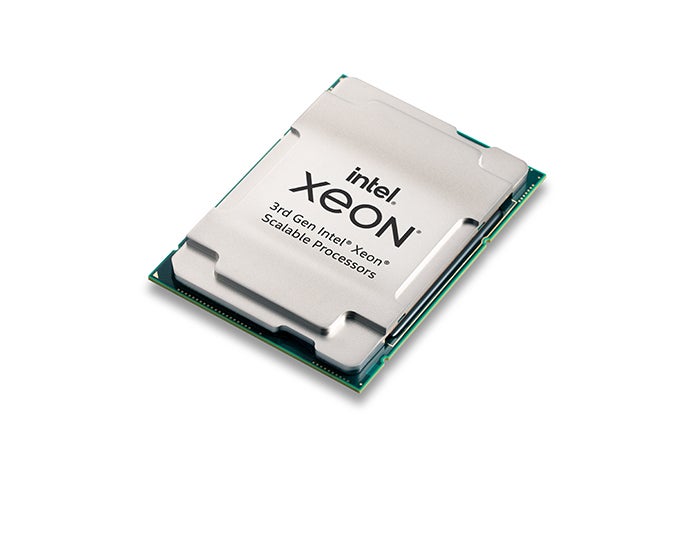
So it’s finally here. On Tuesday, Intel formally announced its new 3rd generation Xeon Scalable “Ice Lake” processors, the first from its much delayed 10nm (nanometre) process node.
“Our 3rd Gen Intel Xeon Scalable platform is the most flexible and performant in our history, designed to handle the diversity of workloads from the cloud to the network to the edge,” said Navin Shenoy, vice president in charge of the Data Platforms Group at Intel. “Intel is uniquely positioned with the architecture, design and manufacturing to deliver the breadth of intelligent silicon and solutions our customers demand.”

Access deeper industry intelligence
Experience unmatched clarity with a single platform that combines unique data, AI, and human expertise.
Also under the “Ice Lake” codename, Intel simultaneously announced new Optane persistent and solid-state drive (SSD) memory offerings, Ethernet 800 networking kit and its latest Adilex graphics silicon.
The chip giant is most famous for processing power, though, and the focus was firmly on the new Xeon hardware. Intel sees the new chips as primarily for use in infrasructure applications rather than personal machines, at least to start with. However the company understandably thinks its new offer would be ideal for almost all infrastructure tasks, suggesting that the Gen 3 equipment would be ideal in data centres, network boxes and even in some edge-cloud situations – such as AI image classification which might need to be done with low latency near the endpoint.
Ice Lake Xeon, according to its maker, is especially suitable for AI work in general, with Intel stating that its Deep Learning Boost tech makes the new Xeon ideal in fashionable machine-learning AI applications implemented through the use of deep neural networks. Indeed, Intel goes so far as to describe the new silicon as “the only data center CPU with built-in AI acceleration” and says it is comfortably faster than AMD’s EPYC 7763 or Nvidia’s A100 graphics unit “across a broad mix of 20 popular AI workloads”.
Apart from AI optimisation, nowadays an increasingly hot button issue, Intel says the new Xeon-ware also has security baked in, and it is also especially good for handling crypto-intensive tasks such as payments processing.

US Tariffs are shifting - will you react or anticipate?
Don’t let policy changes catch you off guard. Stay proactive with real-time data and expert analysis.
By GlobalDataAnd of course, apart from all these goodies, the Ice Lake Xeons are the first from Intel’s new “10nm” fabrication process. In times of old, the nanometre measurement of a chip’s transistor gates was the primary means of telling how powerful it would be: the smaller, the better. In this context, Intel might be feeling a little left behind by rival AMD, with its new Ryzen 3000 processors from Taiwan Semiconductor Manufacturing Corp (TSMC)’s new “7nm” process.
But the truth is that labelled gate sizes don’t have a lot to do with the actual size of transistors on chips any more: and anyway, what matters is what a chip can do. The primary factor underpinning that is not the size of the transistors, but the number of them which can be got into a given surface area of chip – and that, in fact, is what Intel founder Gordon Moore was talking about when he laid down his famous “law” back in the 1960s.
Various new metrics are being proposed, further complicated by the fact that some kinds of silicon such as flash memory can get in many more gates for a given area by layering them on top of each other. Gate sizes on flash chips are now actually increasing, as makers can still get a lot more of them onto a given area using 3D manufacturing and so keep increasing capacity.
Thus the reality is that AMD and TSMC with their “7nm” processors are not automatically better than the new “10nm” Xeons. Which is best will be found out as the new hardware goes into use in real systems: and as ever, good system design is likely to prove at least as important as raw power.
That test is coming. Intel VP Lisa Spellman told reporters last week that “all major cloud providers” are planning to deploy Ice Lake, with the first kit online in April. Spellman also stated that 200,000 units have already been shipped.







